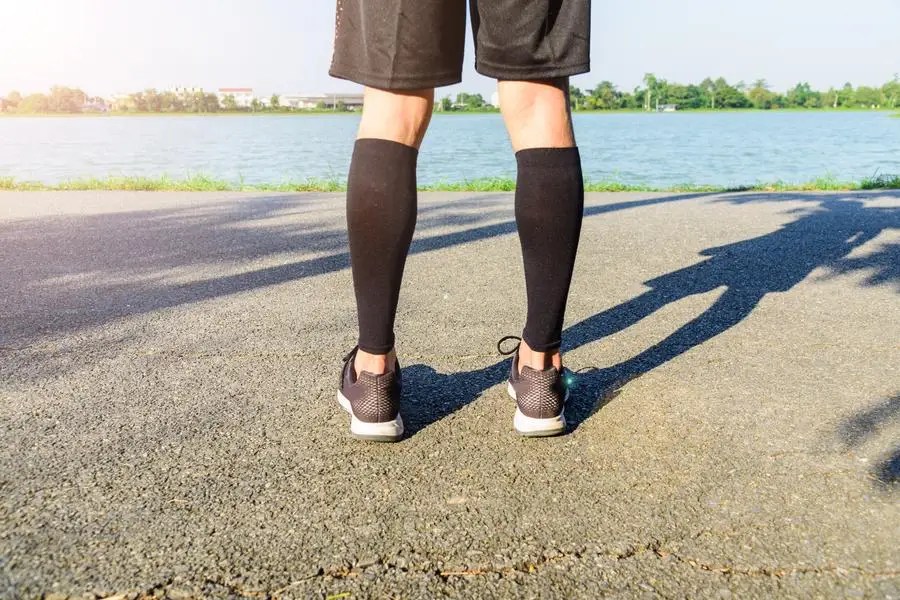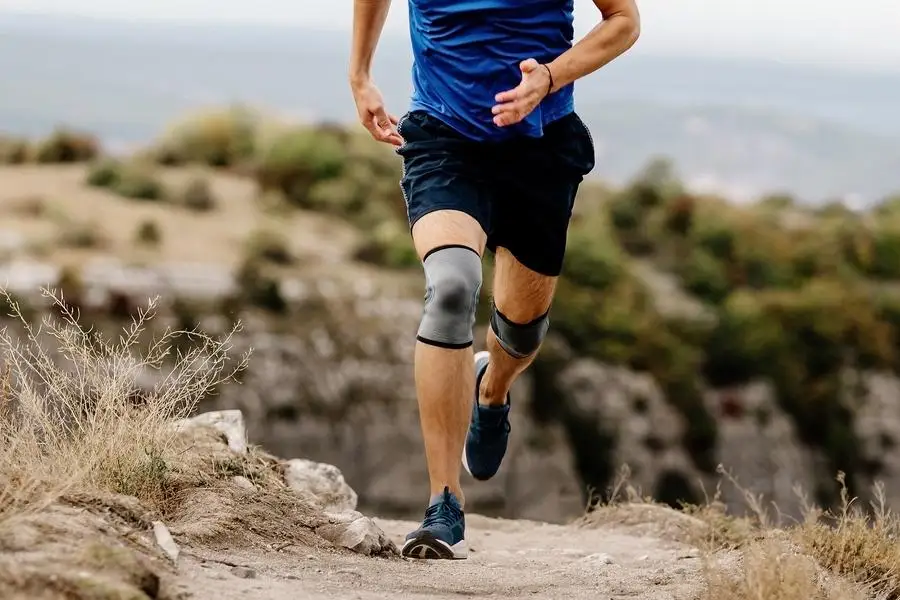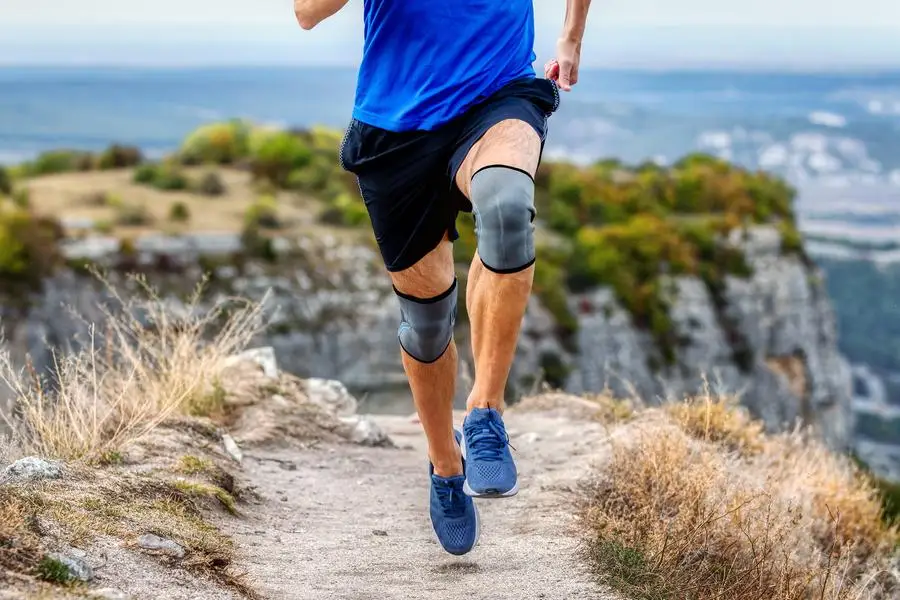If you intend to compete in a marathon or simply want to run a few steps more for your health, you will definitely need knee compression sleeves along with your other sports equipment. Knee compression sleeves can protect your joints while providing relief from pain.
Comfort is not the only benefit of a knee compression sleeves. Find out how the best knee compression sleeves will help you stay fit in this article. We will also provide a complete description of the technical characteristics of these sleeves, and show you how they can help your performance and speed up your recovery process.
Table of Contents:
1. Benefits of knee compression sleeves
2. How knee compression sleeves work
3. Choosing the right knee compression sleeve
4. Proper use and care
5. FAQs about knee compression sleeves
Benefits of knee compression sleeves

Enhanced Performance
These Knee Compression Sleeves offer your knee joint support and stability while you are being physical, which means less chance of injury. They also mean improved performance whether you are running, lifting weights or playing a sport. When the compression improves the flow of blood to the area, your muscles will have the oxygen and nutrients they need to help build endurance and strength.
Moreover, the compression provided by these sleeves enhances proprioception, which is your body’s awareness of where the muscles, joints and other parts of your limbs are in space in relation to each other. Better proprioception often leads to enhanced motor acuity, which translates to better coordination and balance – both critical to athletic performance. Clearly, there is something to be said for the psychological benefits of feeling you have more control over your body, and they are crucial to the experience many athletes say they have when wearing compression sleeves: that their knees ‘feel more secure’.
Pain Relief and Recovery
Knee compression sleeves have tremendous benefits for someone experiencing knee pain (from arthritis, a past injury, or overuse) as the compression reduces inflammation and swelling, which eases the pain. It makes it a much more comfortable activity to engage in, leading to a more active lifestyle even with chronic conditions.
Besides alleviating pain, knee compression sleeves also speed up recovery. By increasing the circulation of blood, they flush out metabolic waste and swelling, which will help you to return to training earlier and avoid downtime.
Versatility and Comfort
One of the great features of knee compression sleeves is that they’re wearable during a wide variety of activities, from high-impact workouts to everyday tasks. Usually made from lightweight, breathable, moisture-wicking material, you can get up and move however you need while still getting the benefits of compression.
The snug fit ensures the sleeve keeps the joint mobilised without being overly restrictive, translating into the desired combination of compression and elasticity for high-impact sport and lower-impact activities such as yoga or walking. The ease of use and relatively unobtrusive quality of the sleeve makes them a great choice for people looking for knee bracing.
How knee compression sleeves work

Mechanism of Compression
Knee compression-sleeves will have graduated compression, where the pressure is highest at the knee and then tapers as it travels up the leg. This helps to drag blood back up towards the heart, improving circulation, which in turn reduces the risk of swelling and helps lactic acid and other metabolic byproducts from the muscles be more efficiently carried away.
This mechanism is especially useful in the post-exercise period, as it enhances the repair process. By keeping the muscles as well oxygenated as possible, knee compression sleeves help to prevent accumulation of metabolic waste products that lead to fatigue.
Joint Support and Stability
Some of the primary purposes of knee compression sleeves include supporting and stabilising the knee joint, aiding in recovery and serving as a protective layer against skin irritation. Compression promotes synovial fluid circulation in the kneecap, keeping it properly aligned aside your leg bones (femur and tibia). It aids in relieving strain on the surrounding ligaments and tendons, which makes it ideal for the treatment of patellar tendinitis or runner’s knee.
The added stability reduces chances of hyperextension or excessive lateral movement (two common causes of knee injury), and also helps prevent forces from being concentrated on certain areas, thus maintaining an even distribution of loads across the joints, avoiding stress and injuries.
Thermoregulation
Another feature of knee compression sleeves is thermoregulation – around the knee. The material used in such sleeves usually has thermoregulating properties so they will keep the knee warm when it is cold and cool when it is hot. This is extremely important for maintaining muscle function and preventing injury due to extreme temperatures.
Choosing the right knee compression sleeve

Material and Construction
When you’re shopping around for a knee compression sleeve, be sure to take note of what the sleeve is made from and how it is constructed. Look for sleeves crafted from high-quality, breathable materials such as compression fabric, neoprene, or nylon blends. High-quality materials provide flexibility and help to keep the sleeve cool. They’re also durable and quick to dry.
The construction should have a reinforced stitch to prevent chafing and, potentially, run in a seam-free loop so that the seams do not dig into the body. Some sleeves also incorporate extra support structures, such as silicone bands, for grip and to make sure that the sleeve will stay in place rather than slide down or off the arm.
Fit and Size
When it comes to a knee compression sleeve, size really does matter. Too tight, and you reduce blood flow to your leg. Too loose, and the sleeve won’t offer adequate support. Almost all manufacturers offer a sizing chart based on girth measures around your knee and thigh. Follow these guidelines to ensure the best possible fit.
The length of the sleeve is also something you need to think about: some sleeves go no higher than the knee, while others go higher up the leg, and still others come down the leg past the calf and even further down. This is something you will need to think about given your requirements, as a longer sleeve can give your leg more support, while a shorter one might be more to your liking if flexibility is your priority.
Intended Use
Think about what’s your main reason to use the knee compression sleeve; are you going to use it after sustaining an injury, or do you want to use it because you are into some specific sports? Different activities will require different amount of compression and support. For example, if you want to use the sleeve for high-impact sports, a thick sleeve with heavier support structure would be more preferable, because you will need more support from it.
Proper use and care

Wearing Your Sleeve
Wearing your knee compression sleeve properly should help maximise its benefits. Put it on by slipping it over your leg as far as it will go. It should end just above your knee. If there are any wrinkles or bunches in the fabric, it is not fitted properly. The fabric of the sleeve should feel snug, but not tight. It shouldn’t restrict your leg or knee.
The sleeve should be worn during exercise or any activities that put stress on your knees and afterwards, to reduce swelling and muscle soreness.
Maintenance and Cleaning
With regular wear and proper care and cleaning, your compression sleeve will last longer and stay effective. Most sleeves can be washed in the washing machine. Check your manufacturer’s care instructions. If it recommends machine washing, use cold water and a gentle detergent; avoid fabric softeners, which will break down compression material.
Preferably, air dry your sleeve and avoid machine drying to maintain the elasticity of your sleeve and prevent any shrinkage. When your sleeve is not in use, it’s best to store it in a cool, dry spot to avoid heat, moisture and sunlight damage.
Replacing Your Sleeve
Eventually, they’ll start to lose their elasticity and become less useful. The time for a new sleeve is when you can visibly stretch the sleeve, when you don’t feel the compression, and when the seams start to fray. A quality sleeve will last you at least several months to a year depending on usage, so check it regularly and change it as needed to ensure that you continue to get the right amount of support.
FAQs about knee compression sleeves

Are knee compression sleeves suitable for all types of knee pain?
Knee compression sleeves can also help relieve other types of knee pain, including arthritis and tendinitis, as well as knee pain from minor injuries. However, it is important to remember that compression sleeves are not a substitute for medical treatment. If you have severe knee pain or your pain continues after you use a compression sleeve, consult a health professional for a diagnosis and appropriate treatment.
Can I wear a knee compression sleeve all day?
In terms of safety and for most people, you can wear a compression sleeve on your knee continually, although you should still be mindful and evaluate how it feels. If you experience pain, numbness or tingling, stop and don’t wear it. If you have a chronic condition, a qualified medical provider can help you determine the duration of use for you.
How do I know if my knee compression sleeve is too tight?
A knee compression sleeve shouldn’t be uncomfortably tight. You shouldn’t feel it cutting off circulation, leaving your leg numb and tingling, or digging into your skin. If the sleeve feels too snug, try a larger size, or a sleeve with less compression.
Conclusion
Whether you’re a top-level athlete, a fitness enthusiast looking to achieve more, or anyone trying to relieve pain or speed up recovery, knee compression sleeves are an indispensable aid. With their ability to provide stability, improve circulation, and ensure versatility of use, these sleeves cater to a wide range of needs. Finding the right sleeve for you, using it in the right way, and maintaining it properly will allow you to get the most out of this essential bit of kit. Get the right knee compression sleeve and enjoy taking your activities to the next level with the right support.



